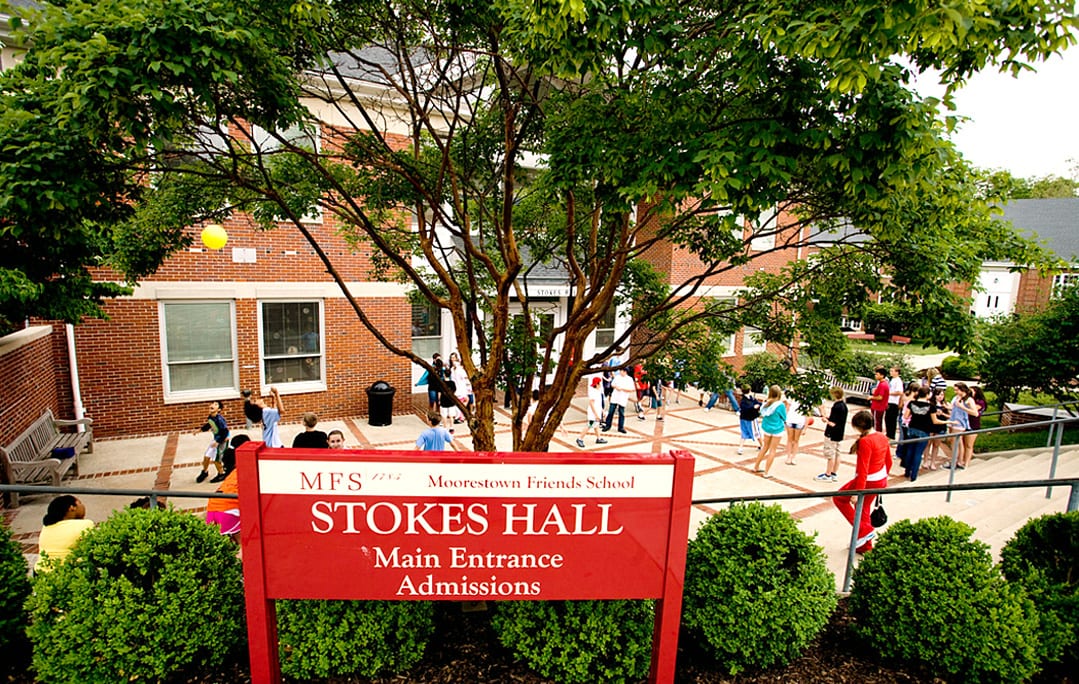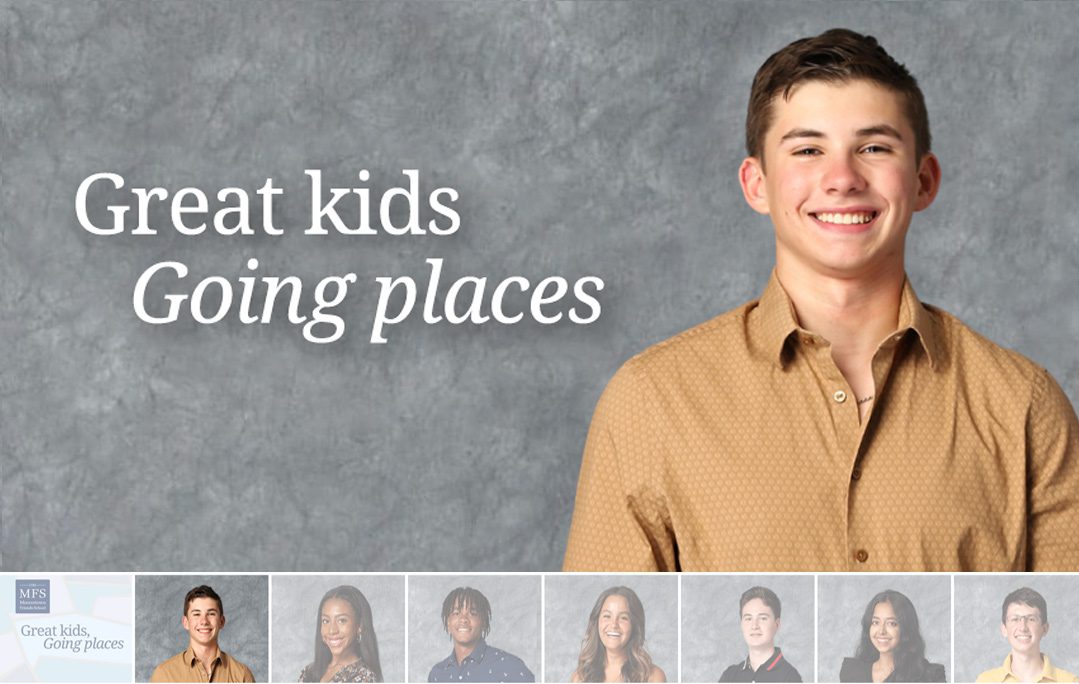Our Program
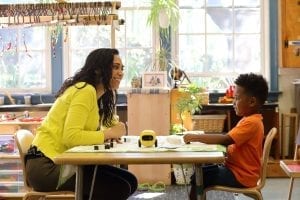 The years of Preschool, Prekindergarten, and Kindergarten are among the most important in a child’s development. There is no time when young minds will grow and change more rapidly. There is no period more critical in shaping the ways that children learn and think, interact with others, and feel about school and themselves.
The years of Preschool, Prekindergarten, and Kindergarten are among the most important in a child’s development. There is no time when young minds will grow and change more rapidly. There is no period more critical in shaping the ways that children learn and think, interact with others, and feel about school and themselves.
Frequently Asked Questions
What does “educational excellence” mean for a 3-, 4-, or 5-year-old?
At many schools, the answer lies in acceleration — in short, presenting material from first, second, or third grade early. At MFS, we disagree with this approach. We believe the most excellent experience for young children is the most developmentally appropriate one.
Yes, preschoolers can be taught to sit in circle time for extended lessons, to complete work sheets, and solve math problems. No, this is not optimal use of their remarkable talents.
Young children are wired to explore. They learn through play. They learn in motion. And they should learn not only facts and skills, but also how to cooperate and communicate, to be part of a school community, to be resilient and resourceful.
Skilled teachers create opportunities for students to learn these lessons. They channel children’s natural curiosity. They help each student face challenges and experience successes.
How are children supported during their school day?
We consider the education of young children to be work of enormous importance. This is evident in the care we take our staffing choices: This is a school where you will find experienced teachers with advanced degrees leading a class of three-year-olds.
Furthermore, in our early childhood classes, we maintain a ratio of one teacher to just 7 or 8 students. This level and quality of personal attention gets to the heart of what sets MFS apart — as do our outstanding facilities and robust array of special classes, all taught by qualified specialists. (These include art, music, science, Coding, physical education, technology, and library.) The Coding program, which debuted in 2015-16, provides students with valuable computational thinking, problem-solving, and teamwork skills. Moorestown Friends School is one of the only schools in the United States to offer a Coding program to all Lower School students – Preschool through Grade 4. To view a video that explains Coding in more detail, please click here.
What does the classroom look like?
Of course, there is no single correct design for an early childhood classroom. However, the way a room looks does reveal something about the experience it is home to.
- If students’ days are spent exploring, the room should reflect this, with stations and destinations of many kinds—not just a carpet area for group lessons.
- If students’ creativity is given full chance to take flight, the room should teem with art—not perfect cookie-cutter coloring, but individual creations that reflect trial and error and each child’s own vision.
- If students are entering a world really worth discovering, the room should be filled with great children’s books, blocks to build with, and natural light—not cartoon characters and bright plastic toys.
- If children’s days are scheduled as they should be, the room should often be empty and silent. To thrive, young children need lots of time outside. Barring hurricane conditions, MFS kids play and learn outside more than once every day, whether it’s animal studies, monkey bars, or nature walks in the rain.
What happens when kids have a conflict?
This may not be the first question parents consider, but it relates to some of the most important life skills children will ever learn.
Of course, the easiest approach is for the teacher to simply impose order: “Stop it.” “Take turns.” “Quiet down.” However, this shortcut misses an important learning opportunity. Instead, we feel the teacher’s role is to help children build an effective set of skills for conflict resolution.
This often means asking questions rather than handing down judgments. It’s facilitating and modeling rather than law enforcement. And, frankly it’s a lot of work. But time invested in this way yields results of inestimable value, results you see clearly as children grow into their Middle and Upper School years.
How is a Quaker school different from other schools?
The educational program at Moorestown Friends School is built upon the Quaker Values of integrity, simplicity, peace, community, equality, and stewardship.
MFS is committed to developing students who have learned how to live an “examined life” characterized by a dedication to critical thought, openness to the Spirit, ethical development, and resilience. Learn more about how our Quaker history influences life at Moorestown Friends.
Learn More About Our Programs
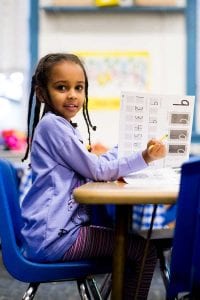 Developing Mathematical Skills for Preschool, Prekindergarten, and Kindergarten
Developing Mathematical Skills for Preschool, Prekindergarten, and Kindergarten
Initially, much of the mathematics learning that takes place in our Beginnings classrooms comes from the children’s play. Children develop geometric concepts as they build with blocks or sort buttons according to their shape. As they work at the water table or sand tray, children develop ideas that lay the foundation for work with measurement. When they recognize and repeat a pattern of actions or sounds, they beginning to develop concepts that are fundamental to algebraic thinking.
Students more formally explore mathematical concepts through the Growing with Mathematics program. The Growing with Math program ensures that understanding and skills are developed simultaneously. It equips students with a variety of thinking strategies they can use to solve problems effectively and confidently. It supports The National Council for the Teaching of Mathematics (NCTM) standards and the National Association of the Education of Young Children (NAEYC) guidelines. Extensive field testing and in-depth research determined the mathematical content and sequence of the program, as well as the teaching methods it promotes. At each grade level, all components and learning experiences are carefully designed to match students’ interests and abilities. Basic fact practice and regular assessment are an important part of the program.
Mathematics Classroom Concepts
A major focus of number work in the Beginnings Program is to help children learn to count accurately and with understanding. Children also begin to compare and order numbers, using concrete materials and then symbols. Number concepts are developed through activities that involve:
-
- Estimating and counting objects, both concrete and pictorial
- Working with different representations of numbers
- Comparing and ordering groups of concrete objects
- Recognizing and beginning to write number symbols
- Using the language of ordinal numbers
- Joining numbers together and breaking numbers apart
- Making equal groups and sharing
Algebraic thinking is developed beginning in preschool through activities that involve:
-
- Sorting and classifying concrete objects or pictures
- Identifying, describing, creating, copying, and extending patterns of sounds, actions, or objects
- Determining the sorting “rule”
- Examining qualitative and quantitative change
- Using objects, pictures, and symbols to represent numbers
Geometry is an intuitive part of mathematics for young children, who are naturally interested in the shape, size, and position of objects in the world around them. Geometric concepts and related language are developed through children:
-
- Describing the relative position of objects in the real world and in pictures
- Investigating the characteristics and properties of 3-D solids and 2-D shapes, and describing their attributes; for example, a triangle has three sides
- Hearing and beginning to use formal names for 3-D and 2-D shapes.
Young children love to measure and compare. In the Beginnings Program the focus is on helping children identify, describe, and compare measurable attributes such as length, size, weight, and capacity. Activities that help develop concepts related to measurement and measuring time include:
-
- Describing measurable attributes; for example, using the words long and short to describe length
- Identifying which object has more or less of a given attribute
- Ordering objects according to a given attribute
- Measuring length using cubes or blocks placed end to end
- Determining the number of units needed to cover an area
- Ordering events in a story or everyday situation
- Working with a calendar that shows the days of the school week and months of the year
Our young investigators and scientists participate in a variety of activities that contribute to the development of data analysis skills including:
-
- Classifying objects as the same or different, according to an attribute such as color, size, or shape
- Sorting concrete or pictorial objects
- Interpreting simple graphs and charts
- Making simple graphs and charts; for example, by sorting concrete objects on a graphing mat, answering yes/no questions on a clothespin graph, making a weather graph, and making a glyph
 Developing Literacy Skills for Preschool, Prekindergarten, and Kindergarten
Developing Literacy Skills for Preschool, Prekindergarten, and Kindergarten
Research has revealed that the single most important activity in early childhood for building understandings and skills essential for reading success is reading aloud to children (Wells 1985; Bus, Van Ijzendoorn, & Pellegrini 1995*). Our Beginnings at MFS teachers read to children daily and actively engage children in each story read by asking predictive and analytic questions to build children’s vocabulary and comprehension of stories. Children talk about the pictures, retell the story, discuss their favorite actions, and request multiple readings. It is the talk that surrounds the reading that gives it power, helping children to bridge what is in the story with their own lives and helping to foster their love of literature.
A central goal in our reading program during these early years is to develop children’s concepts about print. Teachers use a variety of high-quality texts to help children distinguish many print features, including the fact that print (rather than pictures) carries the meaning of the story, that the strings of letters between spaces are words and in print correspond to an oral version, and that reading progresses from left to right and top to bottom.
Mixed Strategies for Reading Instruction and Practice
Through a workshop approach to reading beginning in Kindergarten, our teachers model real reading behaviors and provide instruction on how to read strategically. Children learn through shared reading experiences, teacher directed lessons, small group guided reading experiences, and partner and individual reading. Over time, students feel confident and excited to pick up a book, knowing they have plenty of tools to read and construct meaning from a text.
Books chosen by the teacher and shared with the class expose children to a variety of genre of children’s literature (such as folk tales, historical fiction, poems, plays, biographies). These whole-class experiences offer an opportunity to teach comprehension skills through discussions centering on story elements, vocabulary, making inferences, using prior knowledge, summarizing, and asking questions. In addition to whole-class instruction, small guided reading groups are used by the teacher to focus on specific reading strategies or fluency practice. Each group’s lesson is tailor-fit to meet the needs of those students.
After shared reading experiences and strategy instruction, students practice reading strategies independently with books of their own interest and on their level. For students to truly become proficient, sophisticated readers, they must be given time to read in books that are a perfect fit. This is a time of active reading, when students use the strategies taught during mini-lessons. Each student spends time deeply exploring texts and connecting them to their own lives and the world around them.
During independent reading time the teacher conferences with individuals and may pull small groups to practice a reading strategy and/or to assess student progress. During these conferences the teacher assesses each child. The teacher learns about students’ reading interests, observes strategies used while reading, listens for fluency, and assesses comprehension. Through these conferences the teacher determines teaching points for future mini-lessons.
Conveying Ideas and Knowledge through Writing
The Beginnings at MFS writing curriculum teaches students to be proficient writers for a number of purposes. Whether students want to tell a story about something important that happened to them, write a letter, make a list, record an observation, or report facts learned from research, students learn to become fluent writers that convey meaning through writing.
Our Beginnings teachers help children learn the functions of writing. It is important for children to understand that writing is a way of sharing one’s ideas and knowledge; it is a method of personal communication and conveys a message that can be read at a later time. Each early childhood classroom environment provides meaningful writing opportunities daily. These opportunities may include having children sign in each day, providing an observation journal for each student in the science area, or having writing materials be part of the “props” in the dramatic play area. This can include pads for making shopping lists, index cards for writing recipes, or large paper for making posters advertising a class play. Beginnings teachers ask children to dictate or write stories to go with their artwork. They provide alphabet letters (for example, charts, magnets, books) as reference tools and display them where children can easily see or reach them.
Beginning in Kindergarten, through writing workshops, students spend time daily writing about things that interest them. Students learn about and experiment with a variety of genres including opinion/argument writing, narrative writing, and information writing. Students learn the craft of writing through practice, conferring, and studying the craft of other authors. The ultimate goal of a writing workshop is to empower students with the skills and the understanding of purposes of writing that allows them to develop as life-long writers. The writing workshop includes a lesson, a work time with conferring and a sharing time.
Collaboration with peers and teacher is inherent in this model. Process writing focuses primarily on what children want to communicate. Writing Workshop differs from other forms of writing instruction because students are writing individual stories based on their own experiences. Students are also writing at their own ability level. Students are encouraged to use the strategies that we have learned to write at “their personal best.” That level is different for every student. As students work independently, the teacher is conferring with authors individually or in small groups to address the needs and strengths of the students.
Incorporated within these units of study, we constantly reinforce the Traits of Good Writing: ideas, organization, word choice, sentence fluency, voice, and conventions. Students study the works of published writers as well as examine student writing as they learn about the format of each genre as well as the conventions that make writing strong.
*Works Cited:
Bus, A.G., M.H. van Ijzendoorn, & A.D. Pelligrini. 1995. Joint book reading makes for success in learning to read: A meta-analysis on intergenerational transmission of literacy. Review of Educational Research 65: 1–21.
Wells, C. Gordon. Language Development in the Pre-School Years. Cambridge University Press, 1985.
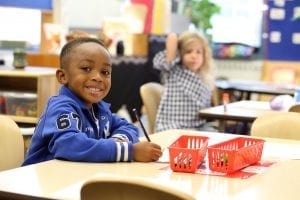 Handwriting Without Tears
Handwriting Without Tears
Beginning in Preschool students learn the basics of proper pencil grip, body awareness, posture and proper letter formation through a formal handwriting program, Handwriting Without Tears (HWT). The goal of Handwriting Without Tears is to make legible and fluent handwriting an easy and automatic skill for all students.
The HWT curriculum uses multi-sensory techniques and consistent habits for letter formation to teach handwriting to all students—Preschool through Cursive. In our Beginnings at MFS classrooms before the students write the letters using pencil/paper, they are building letters with wooden pieces, writing them on a small slate board with small sponges, small pieces of paper towels and small pieces of chalk. In the older grades students learn and practice correct letter formation through easy-to-use workbooks.
The program’s unique methods and materials alleviate problems with:
- Letter formation
- Reversals
- Legibility
- Sentence spacing
- Cursive connections

